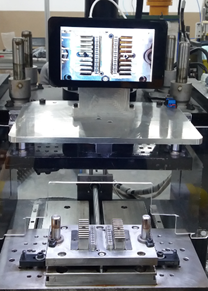
In the current business area, both B2B and B2C customers seek performance products rather than selecting by determining a single criterion like price, availability or quality, etc. Besides many others, the key factors for this change may be counted as an increasing number of manufacturers, development of new technologies for production, continuous improvements by producers, and the resulting competitiveness. As a result, both product quality and process quality are now a “must” rather than being an advantage-providing option.
Driving Industry 4.0 concept provides many benefits with its digital tools to smart factories. Digital quality control improves the process utilizing cameras controlled by special hardware and software. Such a control may be acquired by machine vision and classification algorithms.
As a sample application, we have realized our first step to machine vision supported quality control in our rotary switch production line. In this first trial, we have applied a cost-effective and easy-to-implement system and achieved a robust quality control process. The Raspberry-Pi based system has been assembled to the moving terminal fixing process to check the amount, form, and sequence of moving terminals. Images of the rotary switch body are acquired by a camera via OpenCV libraries. The acquired images are processed to determine RGB values on selected feature points of the body. Thresholding is implemented to determine the existence of metal contacts comparing the contrast between the colors of metal and plastic parts. An integrated rule-based classification algorithm classifies the rotary switches as conforming or Non-conforming. A non-conforming switch may be sorted according to the fault code provided by the classification algorithm for further process.
This application has helped to save an employee from the process and increase the process quality. Additionally, we have prepared and demonstrated an abstract in the International Engineering Symposium (IES'20) which was included in the abstract book at the link http://ies.idu.edu.tr/home-page/. This basic implementation may be enhanced considering the requirements like rate of the production, image resolution or processing power requirements, etc. The key point is to keep the organizations to spend efforts for taking advantage of tools of the current revolution of the industry which is big data and machine learning for this application.